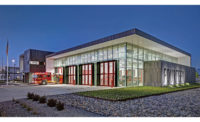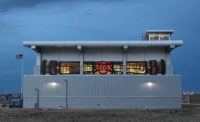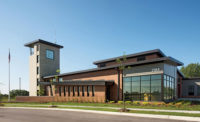Best Government/Public Building: College Station Fire Station No. 6








Bartlett Cocke General Contractors completed work on the $5.9-million College Station Fire Station No. 6 in November 2012. With $200 million in development expected in the station's service area over the next five years and an average 10% to 12% increase each year in emergency calls, the city needed a facility that could meet its growth needs for decades.


The station, designed by Brown Reynolds Watford Architects, required close collaboration among city officials, fire personnel, citizens and the design and construction team.
As with any publicly funded project, the city of College Station wanted to respect and properly use taxpayer money, so one of the largest design challenges was how to minimize life cycle cost and maintenance without sacrificing aesthetics.
Many unique material applications were used in the station to achieve a building that is both striking and durable. A shed roof was incorporated into the design, and due to city restrictions on exposed steel, specially crafted Hardie board panels were designed to encase the structural steel.
A mix of various materials helped link the eclectic architectural styles throughout the city into one cohesive structure. Durability of materials, efficiency and flow are crucial since this building is occupied 24/7 by three shifts of 14 people. The simple floor plan allows for quick travel from any location in the station to the apparatus bay.
A full staircase leads to the third-floor attic space, creating ample storage and providing easy access to all mechanical systems. A hidden rooftop platform housing the air-conditioning units is accessed directly from this area as well, allowing for easy maintenance and replacement in the future.
Many small and often overlooked details were also integrated. An automatic shutoff on the stove and gas grill in the fire-alert system protects the station when the crew must leave unexpectedly. The apparatus bay is wired with exhaust fans to ventilate diesel exhaust, with a complete turnover of the air in the bay in less than 10 minutes.
The station also features coded LED lights that identify each individual crew's specific calls and light the way through the station to the apparatus bay.
LCD screens strategically placed in the bay show readouts of calls and display a clock marking the elapsed time from when the call was received to when trucks exit the building.
Since opening, the new station has averaged 208 calls a month, clearly fulfilling the need for added fire protection in the area.
Key Players
Owner City of College Station, Texas
General Contractor Bartlett Cocke General Contractors, San Antonio
Lead Design Brown Reynolds Watford Architects, College Station, Texas








